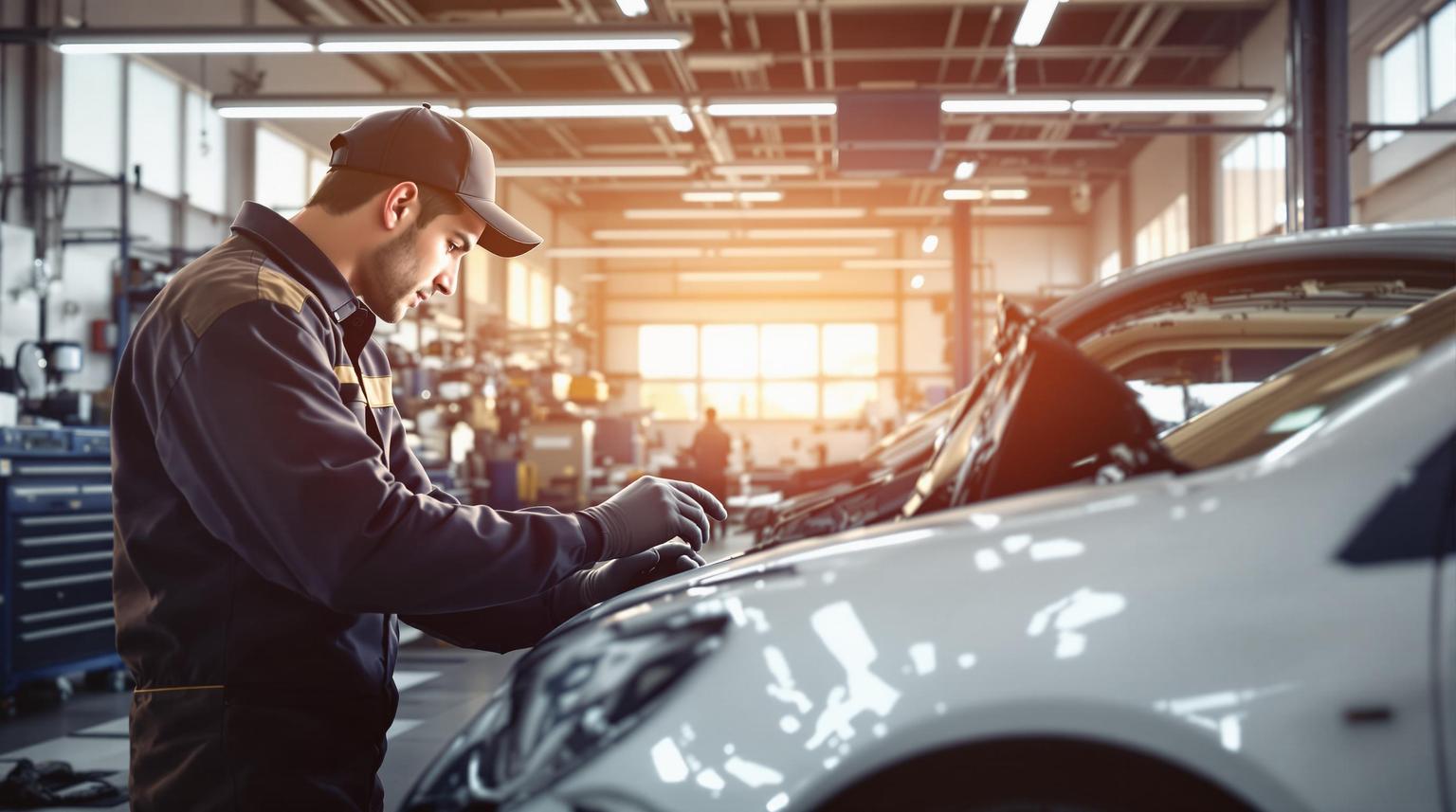April 6, 2025

After an accident, getting your car repaired can feel overwhelming. Here’s what you need to know upfront:
Tip: Use OEM parts for better fit, safety, and resale value.
Auto body repair doesn’t have to be stressful. Start with a certified shop, understand your insurance, and act quickly to restore your car’s safety and value.
Auto body repair involves a step-by-step approach, using specialized tools and methods to restore vehicles to their pre-accident state.
The process begins with an initial assessment, which typically takes 2–4 hours. During this phase, technicians document visible damage and use electronic systems to uncover any hidden structural issues.
Here’s how the repair process unfolds:
The time required for repairs depends heavily on the severity of the damage.
Repair durations can vary widely. Below is a general guide:
Several factors can influence how long repairs take, such as:
Once structural and cosmetic repairs are complete, advanced techniques and computerized paint matching ensure the vehicle looks as good as new. A final 24-hour quality control check confirms the repairs meet manufacturer standards.
After picking up your vehicle, avoid washing it for at least two weeks. This gives the paint and materials time to fully cure.
Repair expenses depend on how severe the damage is and the type of vehicle involved. Labor rates can range from $47 to $215 per hour, and newer vehicles with advanced technology often require specialized repairs.
Here’s a breakdown of common repair costs:
The cost of paint jobs, for example, has gone up nearly 30% over the last decade due to the use of advanced materials. Final repair costs also depend on factors like the make and model of your car, the availability of parts, and local labor rates. Knowing these ranges can help you better understand how insurance might cover your expenses.
Insurance is essential for managing repair costs. Here are two main types of coverage:
It’s important to review your policy carefully. Check details like rental car coverage limits, whether OEM parts are included, eligibility for diminished value claims, and how your deductible applies.
To start the claims process, report the accident to your insurance company and get a claim number. Take photos of the damage, get a repair estimate, and decide if filing a claim makes sense based on the repair costs compared to your deductible.
Once you have a claim number, bring it to us, and we’ll take care of the repair process. Keep in mind that insurance estimates based on photos are often lower than the actual repair costs. Any additional damage found during repairs is usually handled through supplemental claims.
Before filing a claim, make sure to:
These steps can help you navigate the process more smoothly and avoid surprises.
Using high-quality parts and precise techniques ensures your vehicle is restored properly.
Original Equipment Manufacturer (OEM) parts are made to match your vehicle's original components exactly. They’re designed to fit perfectly and perform just like the parts your car came with. These parts undergo rigorous testing to meet strict quality standards. Here’s why they’re a smart choice:
Precision doesn’t stop with parts - it’s also crucial for your car’s paint.
Modern auto shops use spectrophotometry to match your car’s paint color. This advanced technology measures how light interacts with the paint, considering factors like fading from age and exposure to the elements.
Here’s how the paint matching process works:
During repairs, technicians often uncover hidden damage that wasn’t visible during the initial inspection. When this happens, they document the findings, update repair estimates, and inform your insurance company. This ensures that every issue is addressed properly.
Choosing the right auto body repair shop is essential to ensure your vehicle is repaired properly and to give you peace of mind. Here's what to keep in mind when evaluating repair facilities.
Certifications can tell you a lot about a shop's expertise. Here are some important ones to look for:
"Car owners with ADAS-equipped vehicles favor OEM-certified collision centers because they adhere to the manufacturer's parts, procedures, and tooling. OEM certification gives confidence that repairs meet factory standards."
While certifications are a good starting point, make sure the shop also communicates clearly and has a solid reputation.
You have the legal right to choose any repair shop, regardless of what your insurance company suggests. Keep these tips in mind:
A reliable repair shop should offer a range of services, including:
"With certification we have access to current OEM data, ensuring proper repairs and maintaining brand loyalty. For some brands, Lexus and Jaguar, for example, if you aren't certified you don't have access to proprietary parts and equipment that you need for making the repairs; repairs are simply impossible."
Shops that offer lifetime warranties and maintain open communication throughout the process are often your best bet. Additional perks like rental car assistance and detailed repair documentation can make the experience smoother. Choosing a shop that meets these standards ensures your car is repaired safely and efficiently.
Getting your vehicle repaired after an accident requires careful consideration of repair quality, safety, and choosing a certified shop. Modern vehicles are more complex than ever, so it's important to rely on professionals who understand the detailed process of proper repairs.
Certified repair shops stand out by meeting manufacturer standards, showcasing expertise, and holding key certifications. These elements help restore your vehicle to its pre-accident condition while maintaining its safety and structural integrity.
Many top-tier repair shops also provide services that enhance the repair experience, such as:
Proper auto body repair not only ensures your vehicle's safety systems are functioning but also preserves its structural strength. Certified technicians with the right tools, parts, and procedures play a key role in maintaining your car's safety and value on the road.